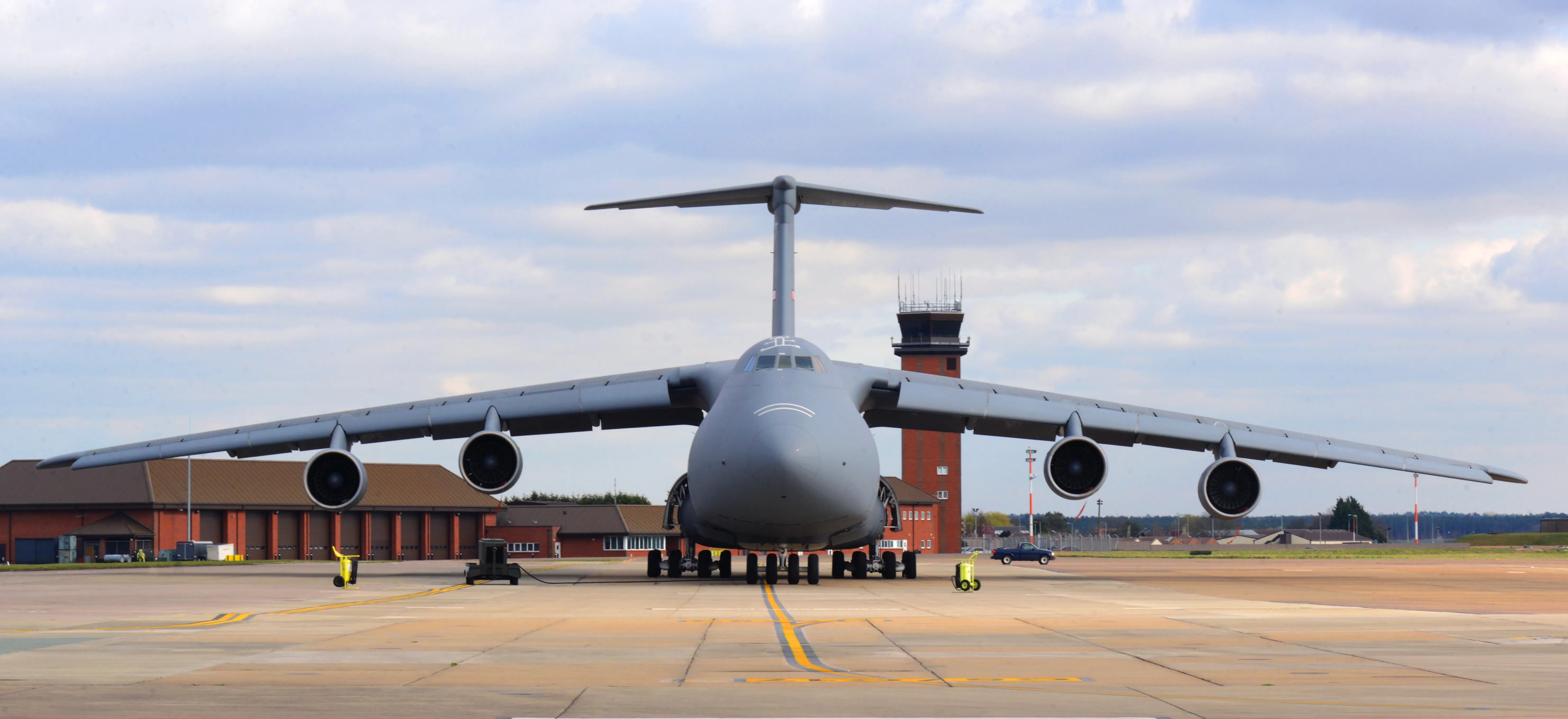The Lockheed Martin C-5 Galaxy is known worldwide for its carrying capacity and remains the largest military transport aircraft in the United States Air Force fleet. The plane has been flying for over 50 years and continues to play an essential role in strategic airlift operations.
During its time in service, the C-5 Galaxy has also distributed humanitarian aid, provided disaster relief, carried cargo for the US space program, and even transported the presidential helicopter, Marine One.
The biggest of the bunch
Lockheed (pre-Martin Marietta merger) developed the C-5 Galaxy in the 1960s to replace the aging C-133 Cargomaster supplement the smaller C-141 Starlifter. The design was one of several submitted in response to a call for proposals by the US Air Force (USAF) for a new super-heavy transport plane as part of its Cargo Experimental-Heavy Logistics System Program.
Want answers to more key questions in aviation? Check out the rest of our guides here.
Boeing, Douglas, and Lockheed competed for the contract, with Boeing's proposal later leading to the development of its Boeing 747. The first C-5A was delivered to USAF on December 17th, 1969, and had its first mission the following summer.

Photo: Dillon Johnston | US Air Force
Several variants of the aircraft were built. The C-5A became the initial type, with 81 aircraft delivered to USAF. Two models were modified to carry cargo for the Space Shuttle by removing the troop compartment and modifying the doors to move the shuttle's large cargo container, earning the C-5C designation. A further next-generation 50 C-5Bs were delivered by the decade's end, featuring over 100 upgrades to improve reliability and reduce maintenance costs.
Related
The Top 10 Largest Planes Ever Made
Let's take a closer look at the giants of aviation.
At the turn of this millennium, the Air Force announced it was investing significantly in modernizing 52 of its C-5s and retiring the rest of its fleet. The resulting C-5M Super Galaxy planes are now expected to fly until 2040.
The biggest of the bunch
The C-5 was the largest aircraft in the world when it first rolled off the production line. The plane features a maximum payload of over 281,000 pounds (127.5 metric tons) and reaches a length of 247.7 feet (75.5 meters), twelve feet longer than an Airbus A380.

Photo: Brad Fallin | US Air Force
The airplane's wingspan reaches more than 222 feet (67.9 meters) across, wide enough to fit the length of a basketball court on each wing. Its height is also quite significant. Standing just over 65 feet (19.8 meters), the Galaxy is equivalent to a six-and-a-half-story building. The plane is too large to fit in most hangars, and its T-shaped tail has been known to remain outside of storage facilities overnight as it could not fit inside the doors.
Carrying all the cargo
The C-5 Galaxy's cargo compartment is also larger than some homes. Both the nose and tail of the aircraft open up to allow for the loading of outsized cargo and speed up turn-around times. Unbeknownst to many, the C-5 is also a double-decker plane. The lower deck cargo compartment is 143.8 feet (43.8 meters) long, 19 feet (5.8 meters) wide, and 13.5 feet (4.1 meters) high. The compartment is large enough to fit 36 pallets, multiple helicopters, or a smaller stealth plane.

Photo: Tracy L. DeMarco | US Air Force
Above the cargo deck is a second level with additional facilities. Although not present on the two C-5C models, the upper level can hold up to 80 passengers, a galley, a crew rest area with beds, a lavatory, and extra storage space.
Other fascinating features include its five landing gear, with a combined 28 wheels to distribute the weight. There is even a system that lowers the aircraft into a "kneeling" position, lowering the cargo floor to standard truck-bed height and allowing vehicles to drive up into the cargo bay.
Want answers to more key questions in aviation? Check out the rest of our guides here.
USAF currently owns and operates 52 of the C-5M variants that are stationed between Dover AFB, Delaware; Travis AFB, California; Lackland AFB, Texas; and Westover Air Reserve Base, Massachusetts. The C-5M can reach most destinations easily without refueling, with a range of 4,800 nautical miles with 120,000 pounds of cargo onboard and 7,000 nautical miles empty. With air-to-air refilling, the aircraft's range is only limited by the crew's endurance.
What are your favorite things about the C-5 Galaxy? Let us know in the comments below.
Source: US Air Force